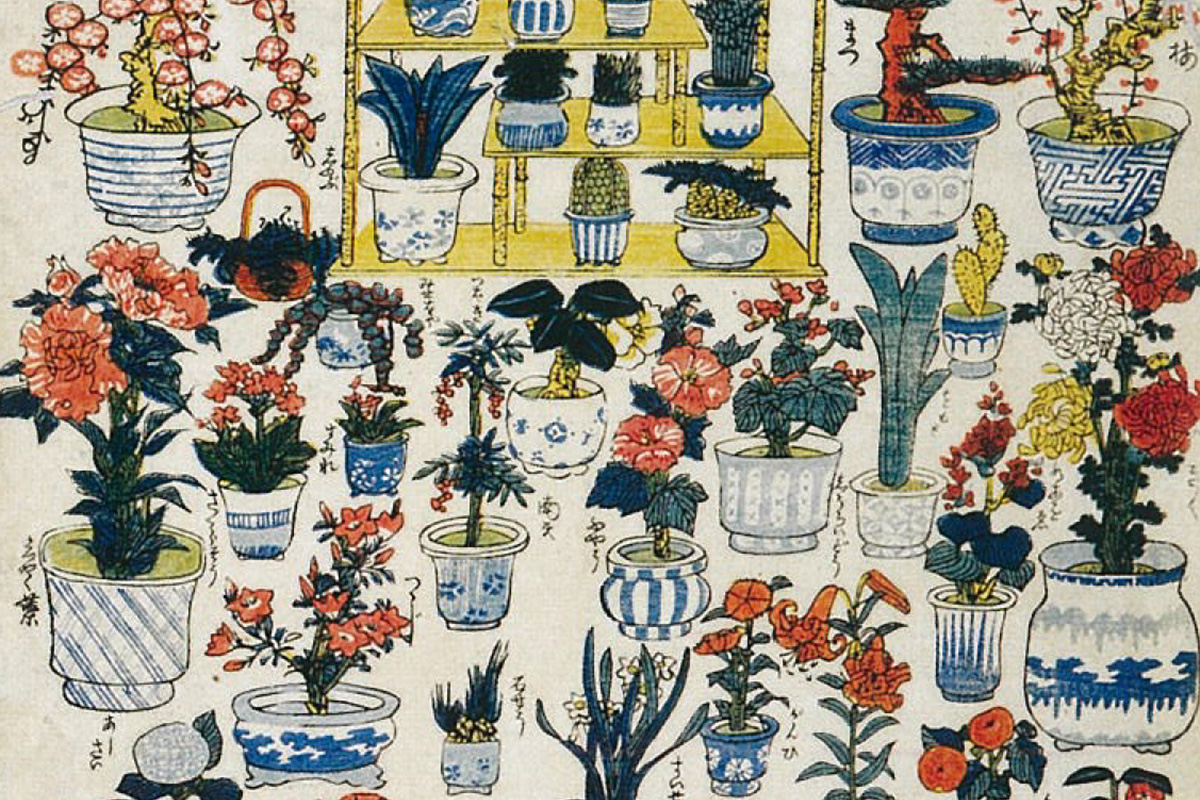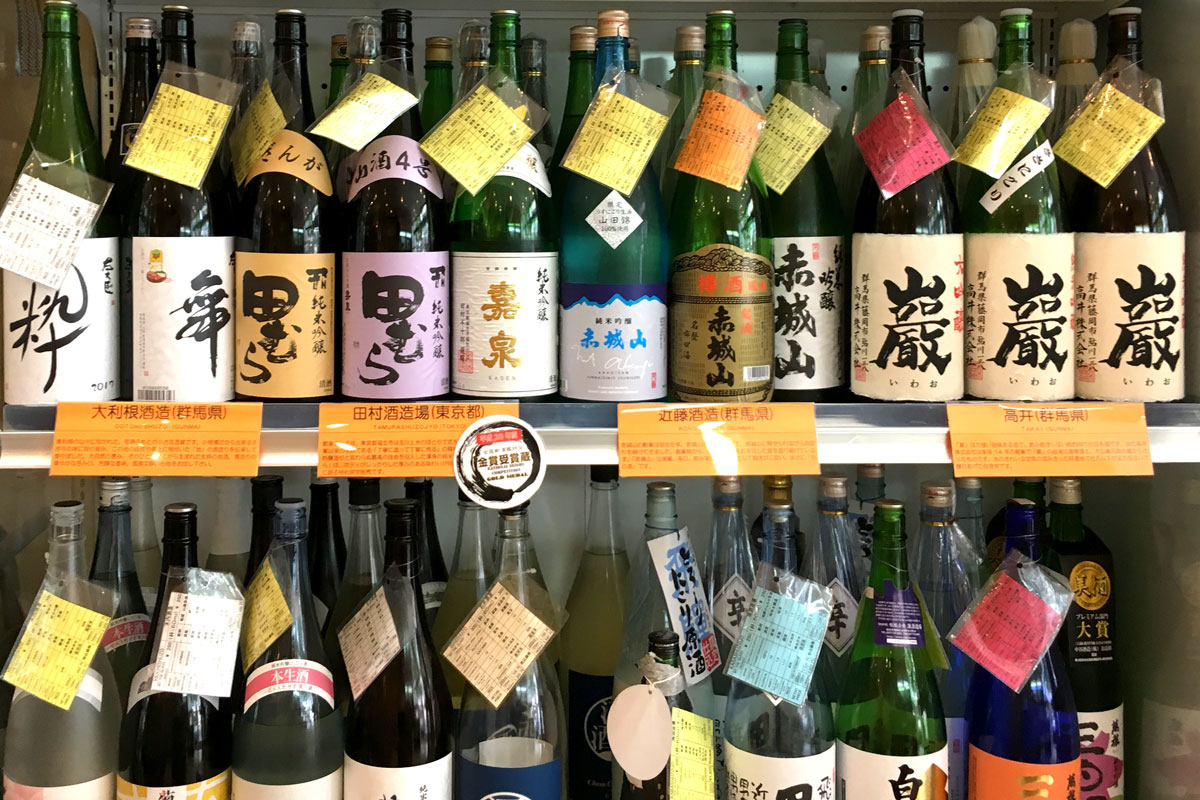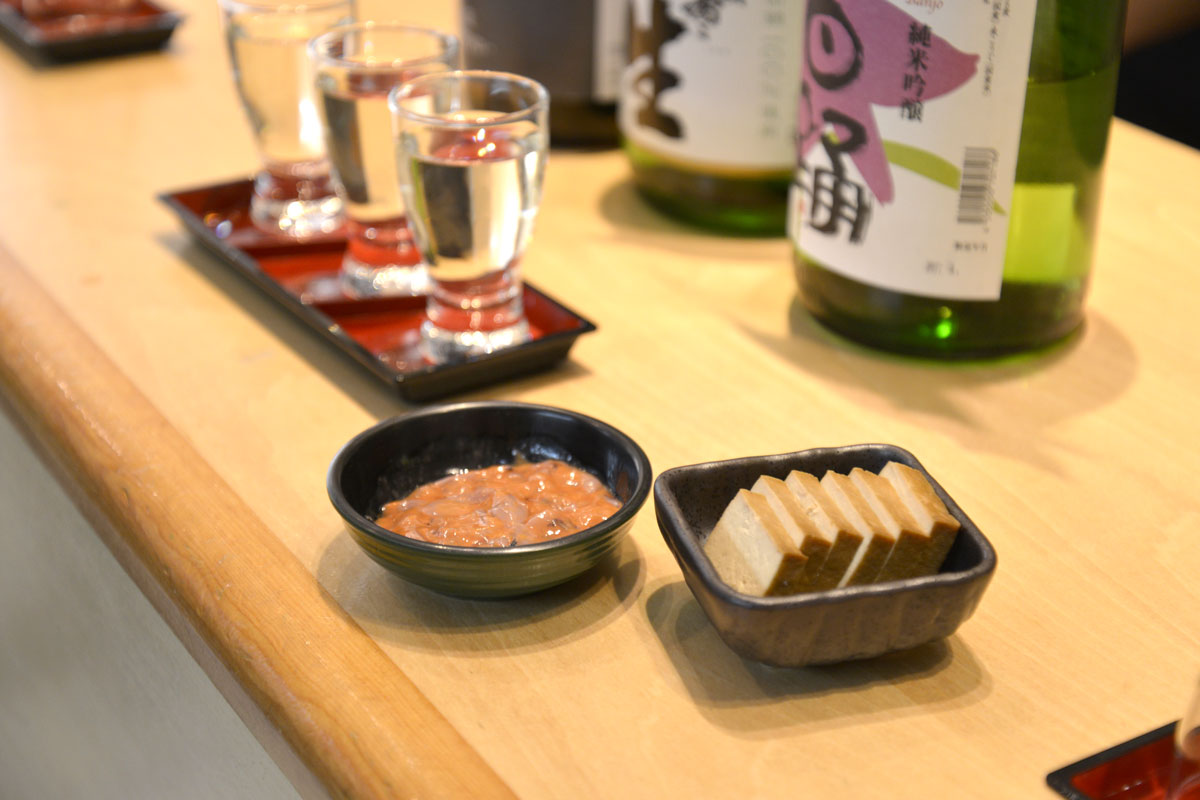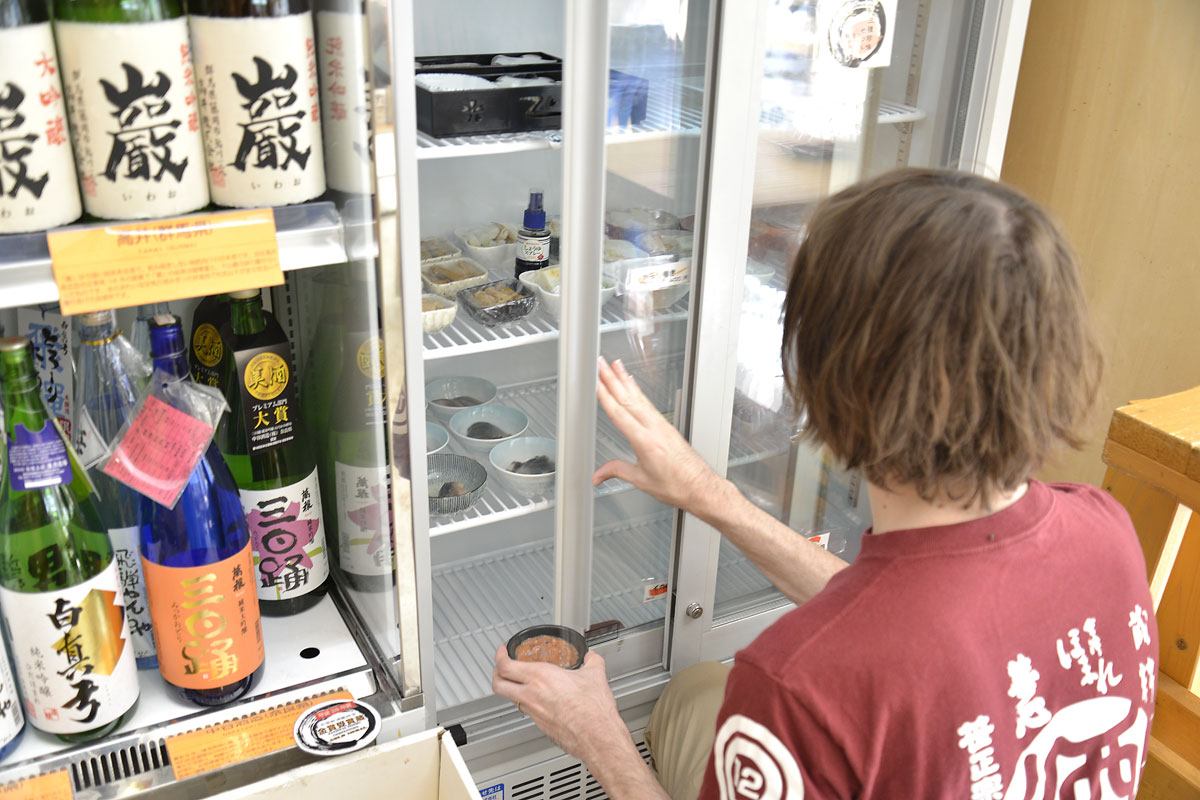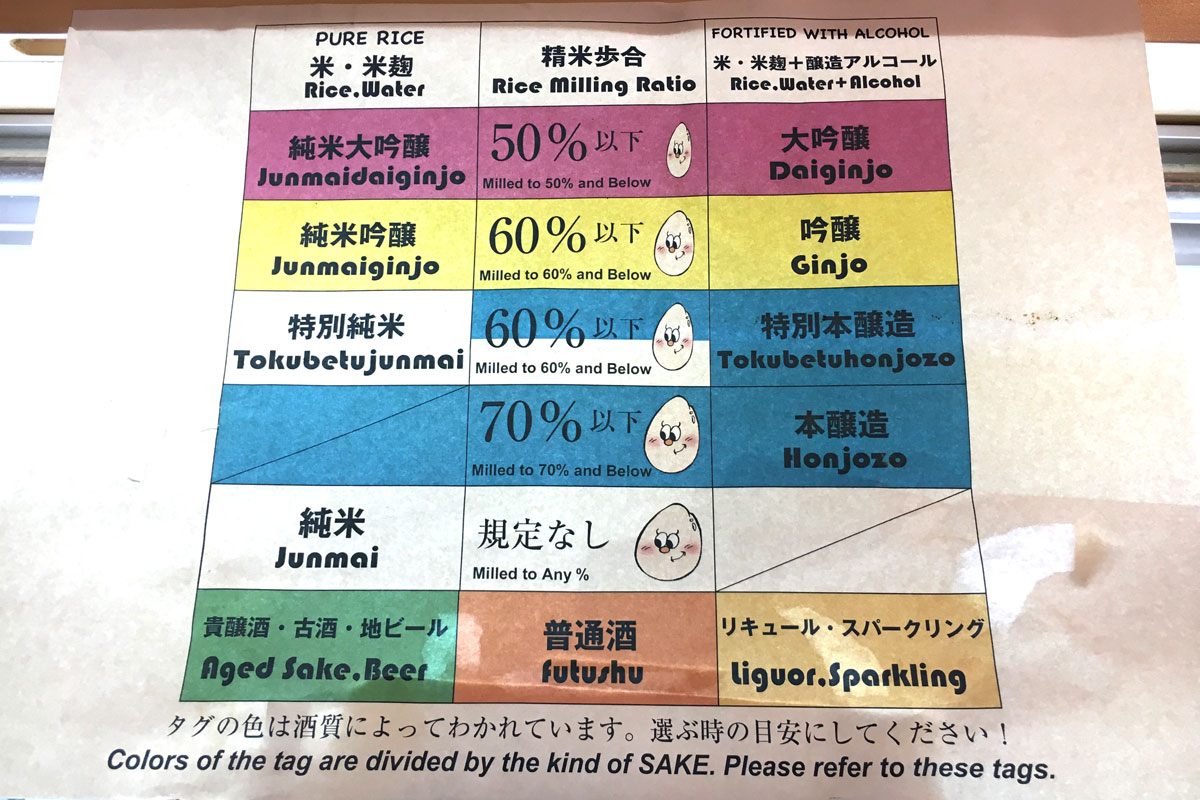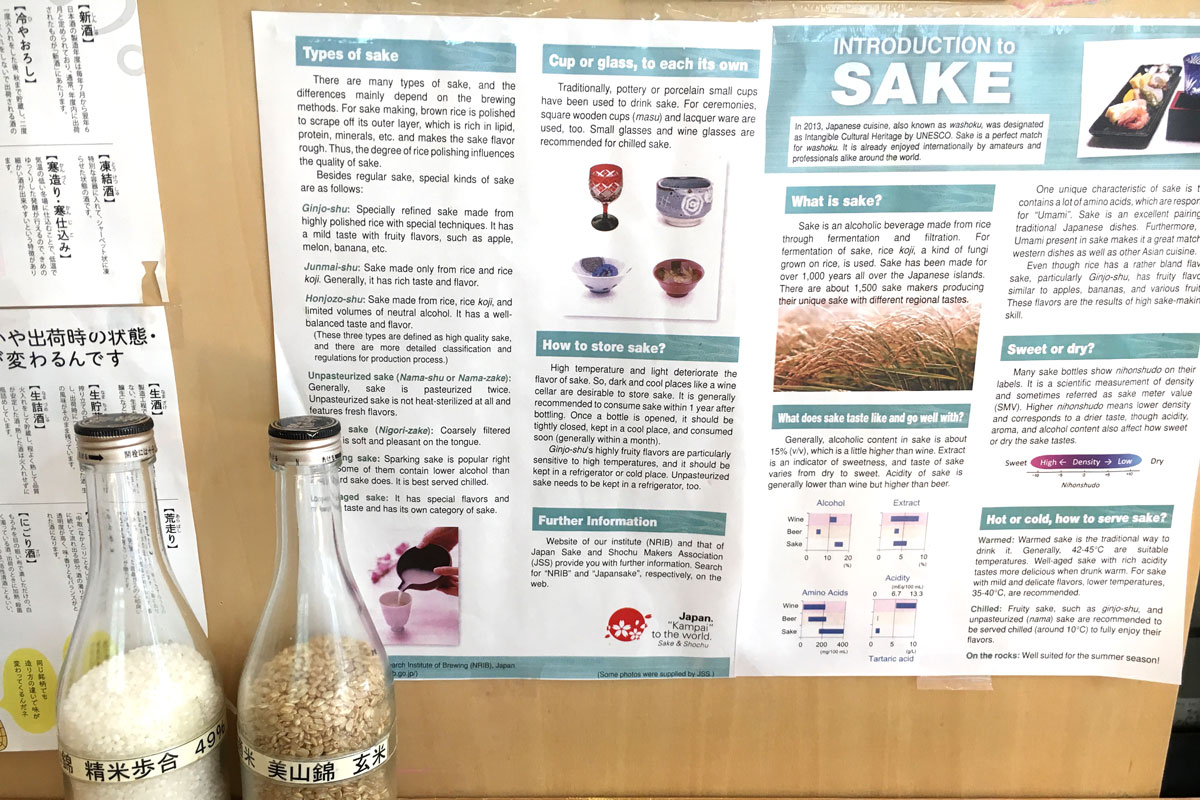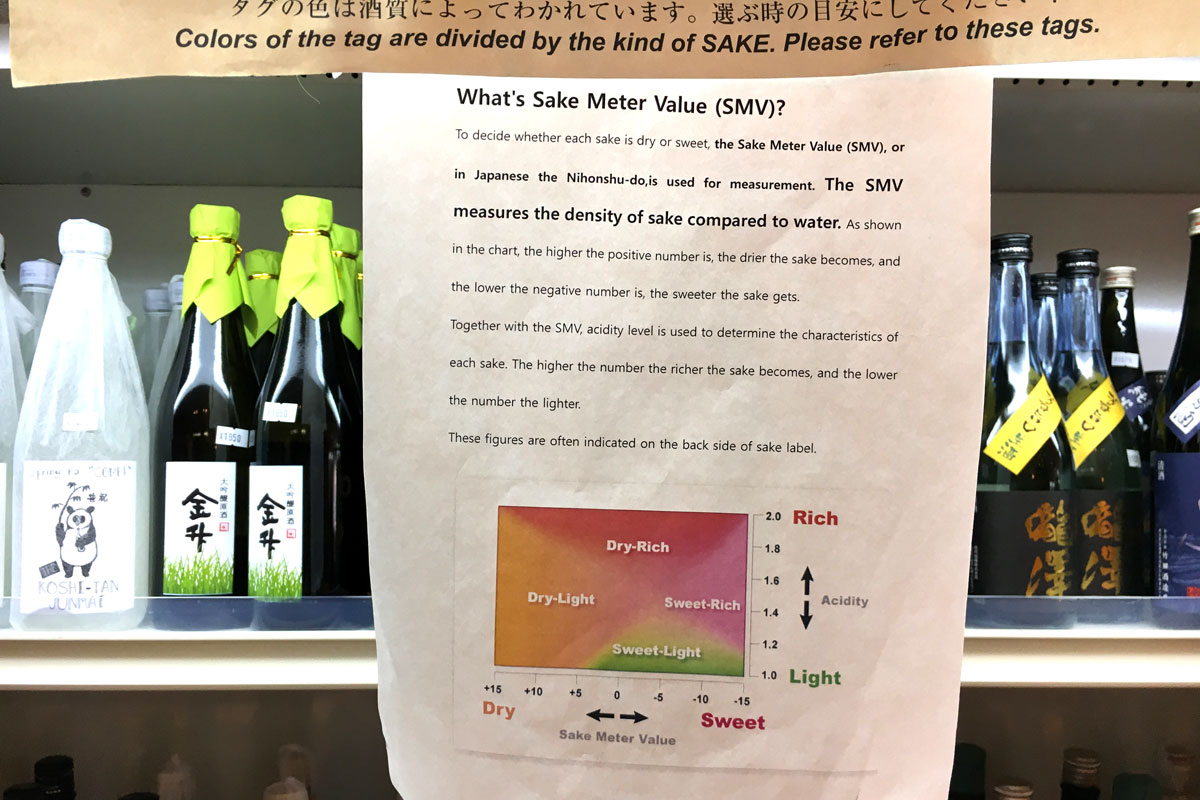[Last updated: August 5, 2022]
The sake scene is hopping these days. Breweries across Japan are producing an unbelievable variety of delicious brews, and new sake fans are born each day—both in Japan and around the world. Specialty sake bars and sake tasting events are more popular than ever, making for a true sake renaissance.
The sheer variety of different brews and ways of drinking is one of sake’s biggest allures, but it can also be intimidating to newcomers. Are you interested in getting into sake, but just not sure where to start? No problem! Today, we’ll take you on a virtual tour of Meishu Center in Tokyo’s Hamamatsucho, a perfect place to begin your sake journey!


Jon Machida
Translator / Writer / Sake Enthusiast
Lover of Japanese literature, subculture, and sake. Born in the United States, but his heart will always be in Japan. No doubt you’ll find him exploring the Tokyo night in search of delicious sake. If you spot him, raise a glass together and say kanpai! (“Cheers!”)
Meishu Center: Start Your Sake Journey
Meishu Center is located a short five-minute walk from Hamamatsucho station (served by the JR Yamanote and Keihin-Tohoku lines as well as the Tokyo Monorail). You’ll find it tucked away on a quiet side street (keep an eye out for the bright orange sign!). Step through the door, and the first thing that’ll catch your eye is the endless rows of colorful sake bottles that line the wall-to-wall refrigerators. You’d think you were in a sake museum! But of course, these bottles aren’t just for admiring. For a small tasting fee, you can sample any variety of sake in sight. It’s a true paradise for the sake lover, and the perfect place for the sake novice to find a brew to their tastes.
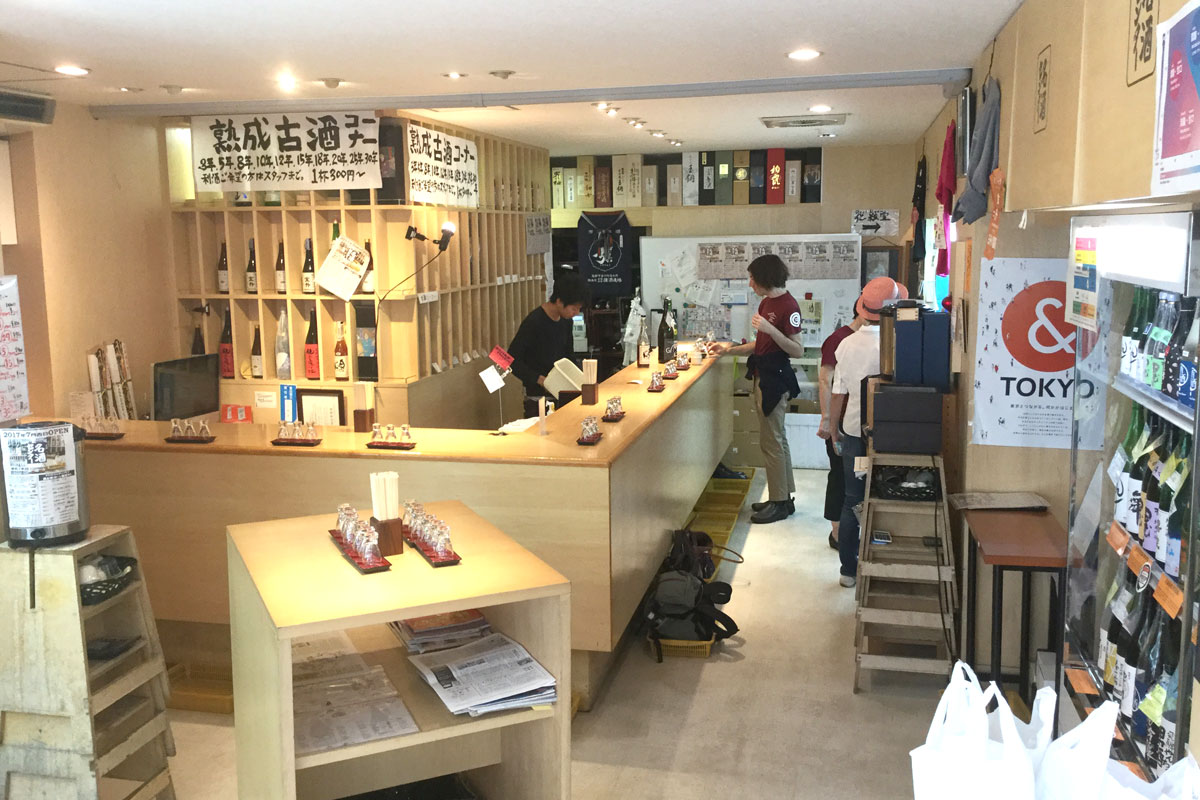
As an “antenna shop” (a Japanese-English term for a city store specializing in goods from particular regions) for over forty breweries from across Japan, Meishu Center continually stocks a rotating selection of over one hundred and twenty brews. The vast majority are from smaller, family-run operations, meaning that you’ll see brands and labels not easily found at your typical Tokyo sake bar.
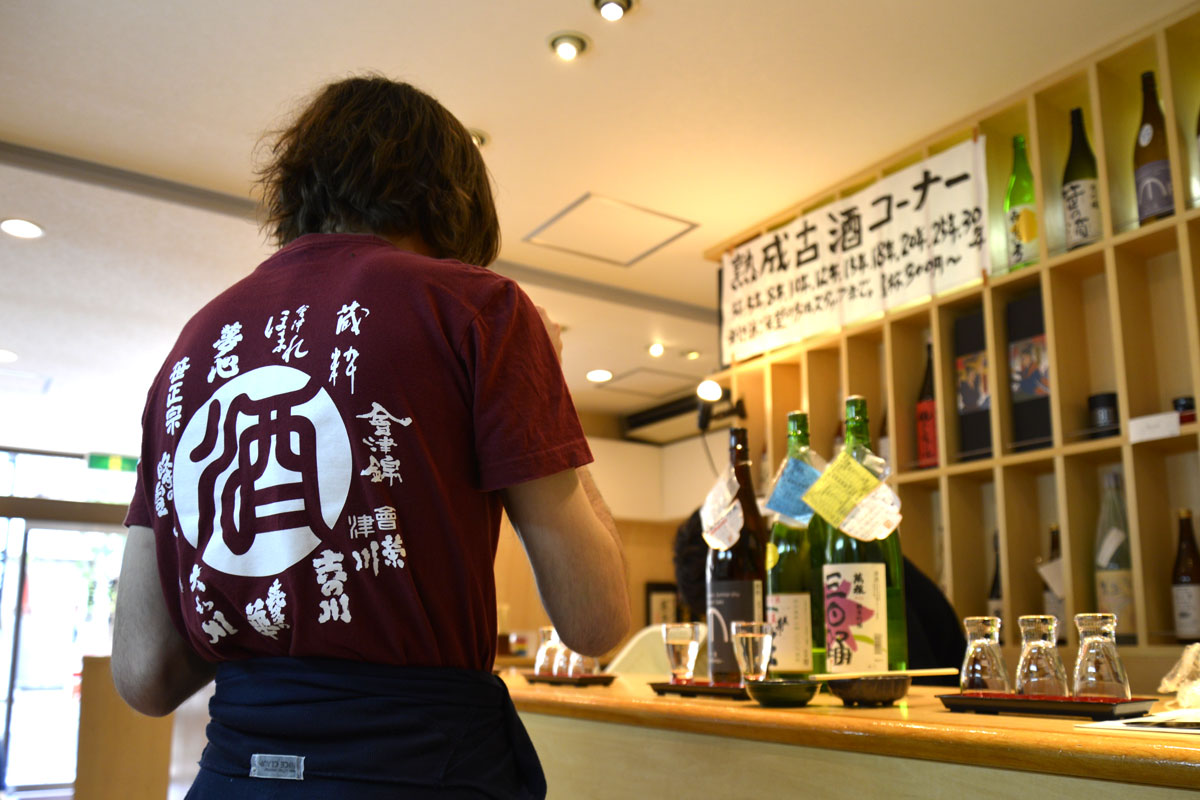
Meishu Center’s pricing system is simple to understand and easy on the wallet, and the staff are more than happy to explain and get you started on your sake adventure. Just choose a bottle that strikes your fancy and bring it to the counter, and the staff will pour it for you. The tasting fee depends on the grade of sake—most will run you 200 to 300 yen a cup, though there are more expensive varieties for the adventurous. Order three varieties for a tasting set, and you’ll receive a 100 yen discount. Being able to sample three varieties of sake for just a single 500-yen coin is a deal that can’t be beat!
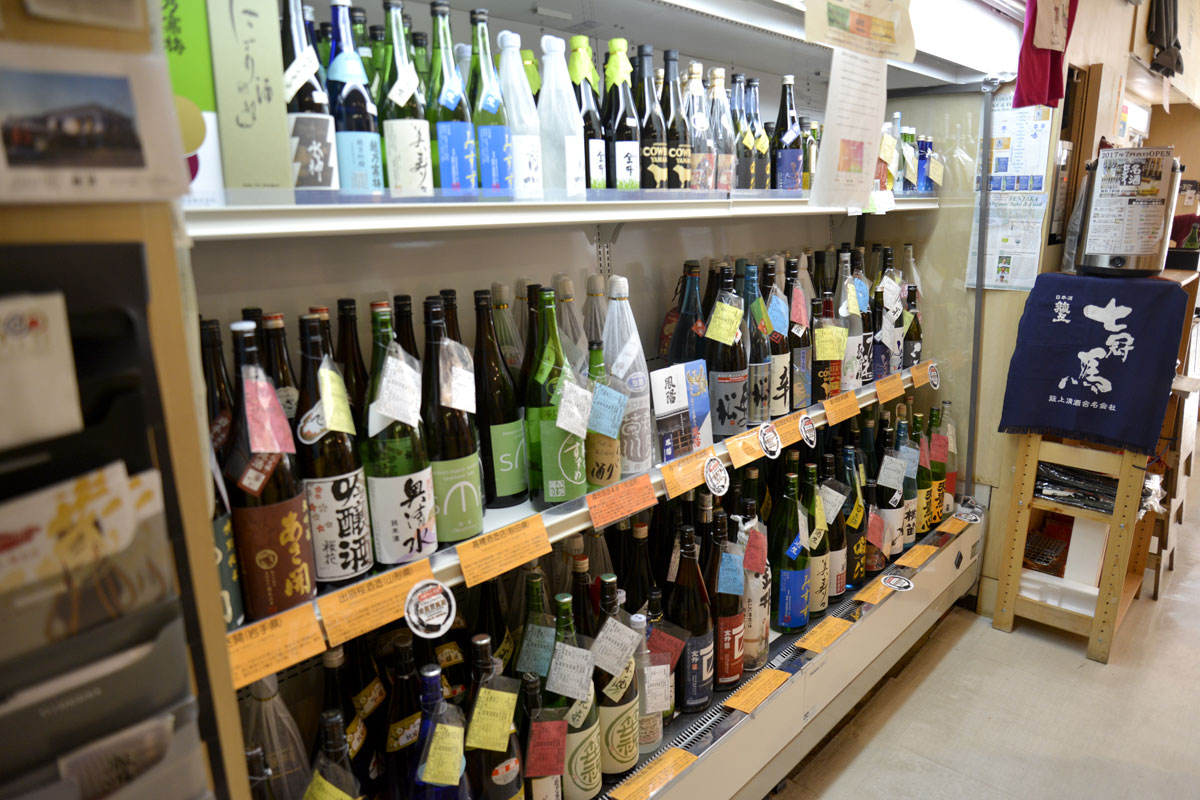
Now, we’re ready to head to the refrigerator to pick out some sake. But with over one hundred varieties to choose from, where to start? Here are some simple tips that should help even the first-time sake drinker find something to enjoy.
Tip #1: Ask the Experts
The staff at Meishu Center knows their sake, and you can just feel their passion for sake culture as you talk to them. They’re more than happy to explain the different grades of sake (such as ginjo, daiginjo, and honjozo) as well as terminology like rice polishing ratio (seimai-buai), sake meter value (nihonshu-do) and acidity in a way that won’t intimidate the beginner. If you just want to enjoy your sake casually, just describe what you’re looking for (for example, “something light and fresh”, “a sweeter sake”, “something full and rich”), and they’ll bring you a sake to match your mood. After your first taste, let them know what you think, and they can guide you to other varieties, bringing you closer and closer to your perfect sake match.
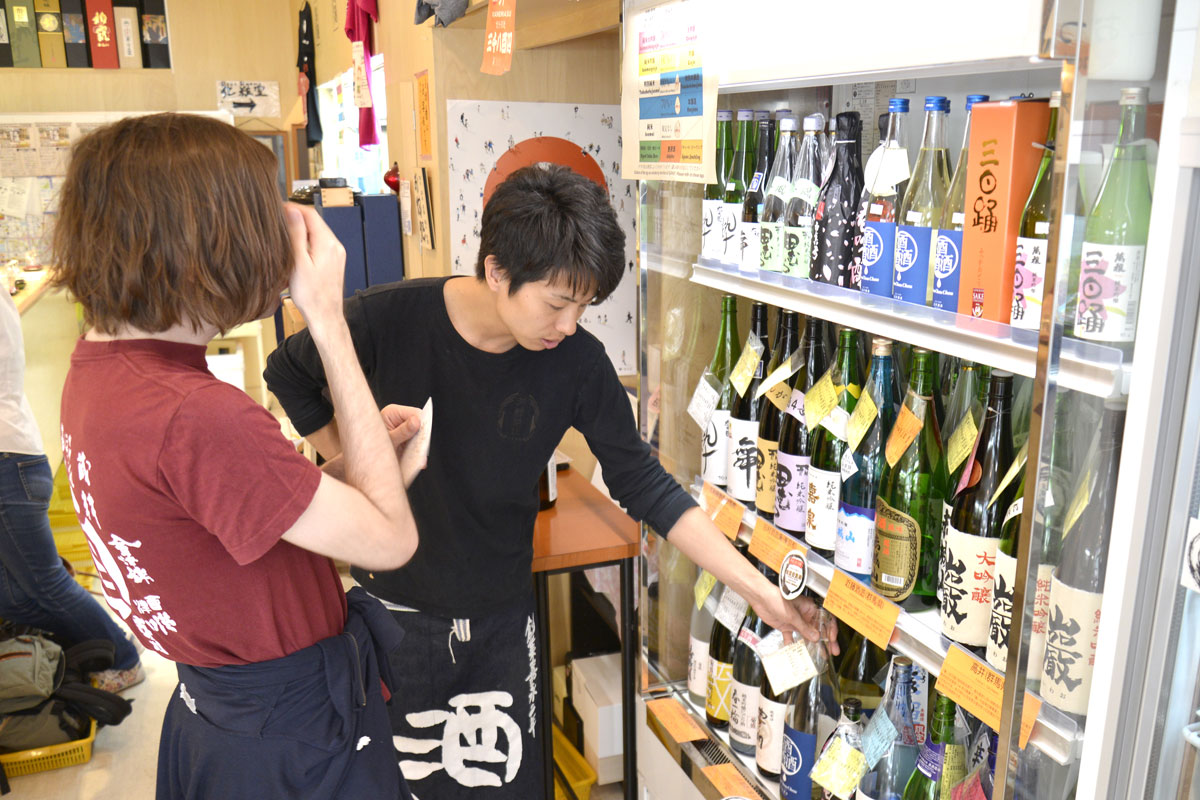
Tip #2: Follow Your Heart
You can’t go wrong asking the experts, but there’s no denying the fun of searching for your favorite sake by yourself. Not familiar with all the sake types and terminology? Not to worry—
there’s nothing wrong with following your instincts! See a cool-looking label, an interesting name, or a sake from someplace you’ve visited? Give it a try! It just might be exactly what you were looking for. The bottles are arranged in geographic order, so you can go on a virtual tour of Japan from north to south and east to west, sampling the best of breweries from around the country.

Tip #3: By the Numbers
On the other hand, if you’re the scientific-minded type, you can try choosing with the help of the various statistics that adorn each sake bottle. Rice polishing ratio (seimai-buai) tells you how much the rice used in brewing the sake has been polished. Daiginjo or ginjo types with a rice polishing ratio in the 40- or 50-percent range (roughly half of the rice milled away) tend to be clear, floral, and elegant, while those at 60-percent and above (not as polished, closer to brown rice) tend to feature a richer, fuller-bodied flavor. Sake meter value (SMV, or nihonshu-do in Japanese) represents the density of sake compared to water. Generally, sake with a high SMV is considered more “dry”, while those with lower (or negative) values are sweeter—though in practice, different brewing methods, rice varieties, and yeasts mean this is far from a perfect guide. Still, statistics like rice polishing ratio, SMV and acidity can serve as a general guide as you search for a sake to your liking.

Savoring Your Sake
Choose your sake and bring it to the counter, and the staff at Meishu Center will tell you more about it (where it was brewed, the ingredients, notable features like aroma or flavor) as they pour you a cup. Now, you’re ready to drink your sake. Though it may resemble a shot glass, downing your sake in one gulp is a definite no-no—sake is meant to be savored. You’ll enjoy your sake most if you start by taking in the aroma and envisioning the flavor. Then have a sip, and delight in the aftertaste after you swallow. After this, you’ll want to try your sake together with traditional Japanese side dishes (we’ll give you some recommendations below!) to enjoy the pairing of sake and cuisine.
When enjoying sake, you’ll want to make sure you keep a glass of water close at hand. Sake is typically higher in alcohol content than beer or wine, and—unlike, for example, shochu—is usually consumed undiluted. The water you drink as a chaser is known by sake fans as yawaragi-mizu, or soothing water. Though everyone’s body is different, as a general rule you’ll want to drink at least an equal quantity of water as sake (up to two times as much for those who can’t hold as much alcohol).

It’s Tasting Time!
So, what kind of sake can you enjoy at Meishu Center? Here, we’ll introduce three varieties of sake that struck our fancy today.
Koiki na Suzume (“Stylish Sparrow”), brewed by Moritami Shuzo Honke in Sendai, Miyagi Prefecture
This junmai (rice and water only, with no added distilled alcohol) sake was recommended to us by Satoshi Honda, one of the young sake experts behind the counter at Meishu Center. Mr. Honda told us that lately he’s taken a liking to sake that aren’t too showy or assertive, but rather have subtle flavors that you never tire of drinking. We had to give it a try. From the first sip, you can tell it makes an ideal dinner sake, with a light and crisp taste that compliments an assortment of dishes. Never too strong on the palate, it’s a perfect sake for a relaxing evening at home.

Mikka Odori (“Three-day Dance”), brewed by Nakatani Brewing Co. in Nara
This sake caught our interest, as it was produced in a special collaboration between Meishu Center and the brewery. The name is a reference to the special three-step process used in brewing sake (known as sandan-jikomi)—in particular the interval between the first two steps (known as odori, or the “dance”). While this usually takes one day, they extended it to three days for this sake to achieve even stronger fermentation. We couldn’t help but enjoy the rich aroma and full-bodied flavor, which truly felt as if it was dancing on the tongue.
Chou Chou Chou, brewed by Ishii Shuzo in Saitama
The bright blue label of this sake makes a stylish first impression. Honda-san explained that both the owner (kuramoto) and master brewer (toji) at Ishii Shuzo are still in their twenties, a rarity in the sake industry. This is a type of sake known as kijoshu—put simply, sake brewed from rice and sake rather than rice and water. Chou Chou Chou goes even a step further, taking that kijoshu and brewing sake from that. Both the color and flavor are unlike anything you’d expect, with a rich, elegant sweetness that makes for a perfect “dessert sake.” We can’t wait to see what these rising stars of the sake world come up with next!
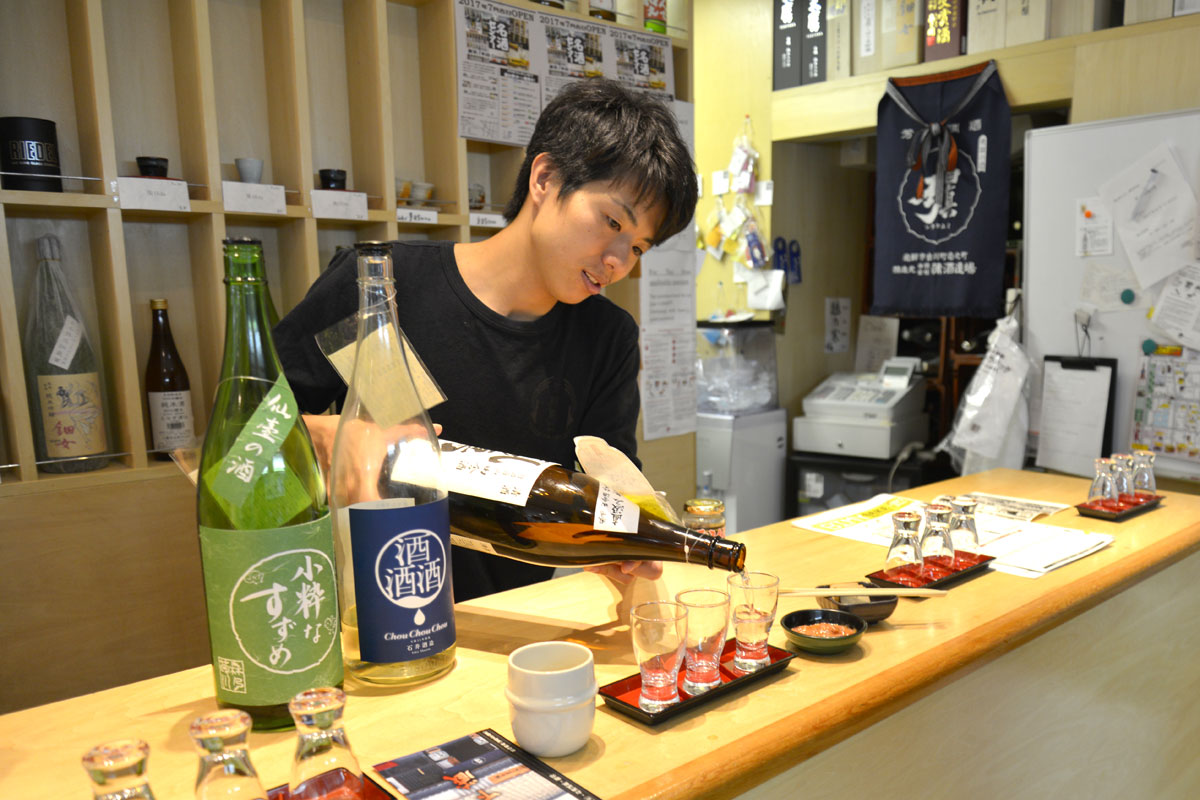
Sampling Meishu Center’s Tasty Sake Snacks
Any sake fan will tell you that while it still tastes great on its own, sake is best appreciated together with food, and Meishu Center provides an assortment of mouth-watering side dishes to bring out the flavor of your sake. Today, we tried the squid shiokara (300 yen)—a fermented seafood dish that’s a favorite of many sake aficionados—and the smoked tofu (400 yen). The former was a perfect match for the crisp flavor of Koiki no Suzume, while the latter—with a flavor and texture like a fine smoked cheese—brought out the rich rice tones of Mikka Odori beautifully. A sampling plate with three delicacies is also available for only 500 yen, allowing sake fans to enjoy mixing and matching to their heart’s content.
A Sake Bar for Everyone
As we were enjoying our sake, one customer after the next came through the door, and before long, the counter and tables behind us were at full capacity. Patrons ranged from twenty-something couples to an elderly gentleman, making it clear that sake’s appeal transcends generations. A bit later, a group of four young tourists joined the crowd. Looking around the store and at the description tags on each sake bottle, we were impressed to see an extensive amount of information provided in English as well as Japanese. As Meishu Center’s Yuko Takebayashi tells it, when the store first opened there weren’t any plans to cater especially to foreign tourists. But after getting rave reviews on a popular English-language travel website, Meishu Center quickly became a popular spot for tourists looking for an authentic sake experience. Nowadays, Ms. Takebayashi says, they get at least one group of tourists almost every day. Lately, they even added an American sake enthusiast to their staff to further improve the experience for their English-speaking customers.
We couldn’t help but be curious, so we went over to make a toast and ask what brought the young tourists to Meishu Center. They were happy to explain that they were visiting Tokyo for ten days from Washington, D.C. They were all visiting Japan for the first time, and decided to try sake because they figured it was representative of Japanese culture. It was fascinating to hear the unbiased, honest impressions of four young people trying sake for the first time.
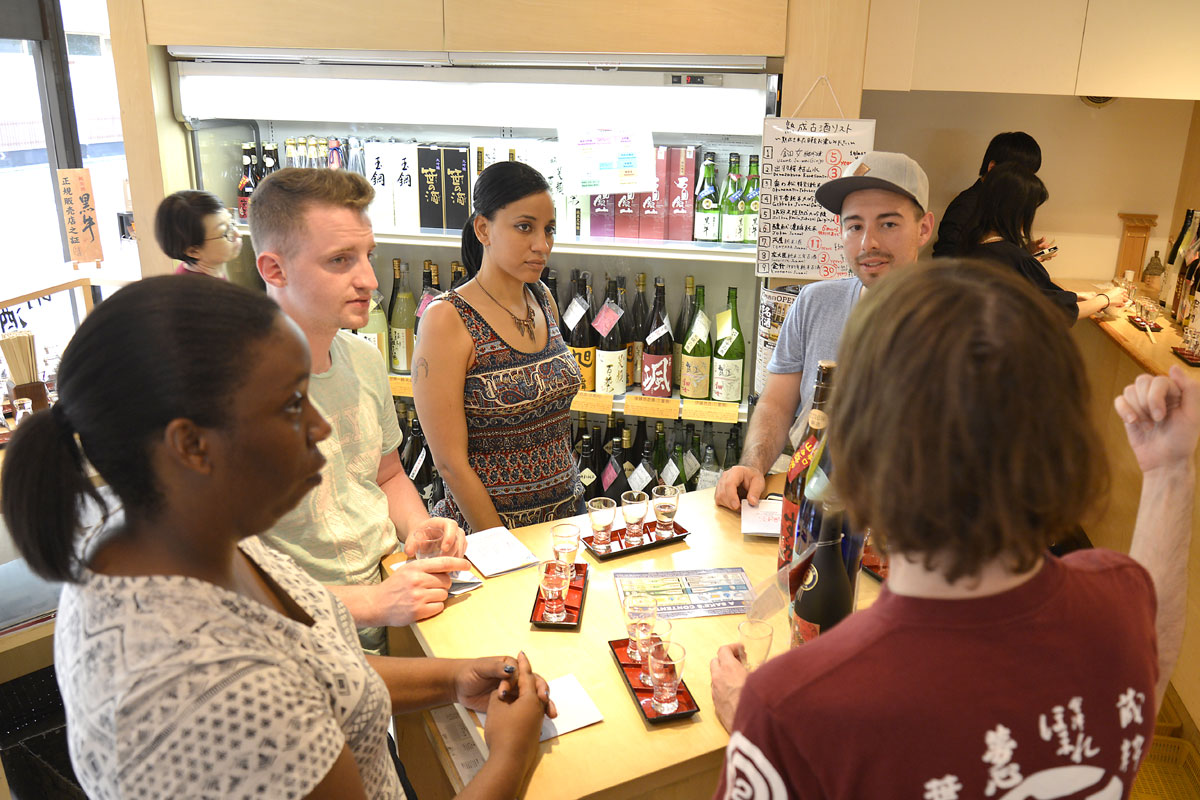
One young woman said that her favorite among the sake she tried was one that tasted as clear as water. On the other hand, a young man said that his favorite by far was one that had a strong, rich taste—different from the whiskey he would drink at home but satisfying all the same. In the news, you’ll often here about certain brands or types of sake being popular overseas, but talking to the four, it became clear that each of them had different tastes. While there’s nothing wrong with drinking what’s popular, there’s no way to know what type of sake will truly be your favorite without trying all the varieties for yourself—and Meishu Center is a great place to do just that.

Heated or Chilled, Fresh or Aged: Sake’s Unlimited Potential
At Meishu Center, you’ll also find a counter with a hot water heater where customers can enjoy hot sake (kanzake or simply o-kan) by heating their chosen sake to their desired temperature. Some might have the impression that fine sake is best served chilled, but believe it or not, hot sake is a deep and fascinating part of sake culture. You could even say that sake is unique among the alcoholic beverages around the world in how its flavor and aroma can change in so many ways depending on the temperature. Sure, you may see “hot wine” or “hot beer” from time to time, but sake goes to another level—in fact, there are certain types of sake that only reveal their true potential when served hot. Of course, the recommended temperature depends on the sake, so you’ll want to consult with the staff to be sure, but why not try heating your sake and experiencing the world of kanzake for yourself?
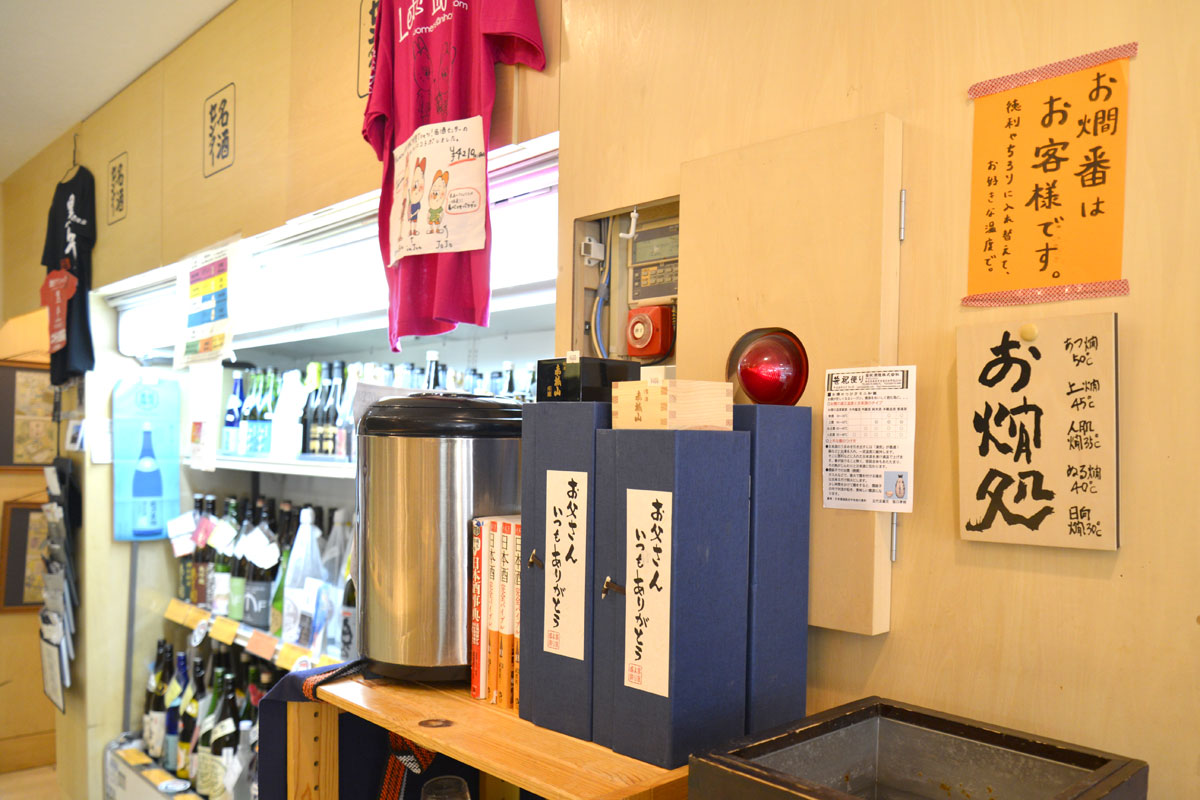
Another common belief is that sake is best enjoyed from a freshly opened bottle. While this may be true for some people and some sake varieties, the truth is that sake has no expiration date. On the contrary, aged sake (jukusei-shu) is a rare treat with plenty of fans in its own right. You’ll find multiple varieties of aged sake at Meishu Center, and we recommend that you try one as a “dessert sake” before you go. (It also goes great with chocolate!)
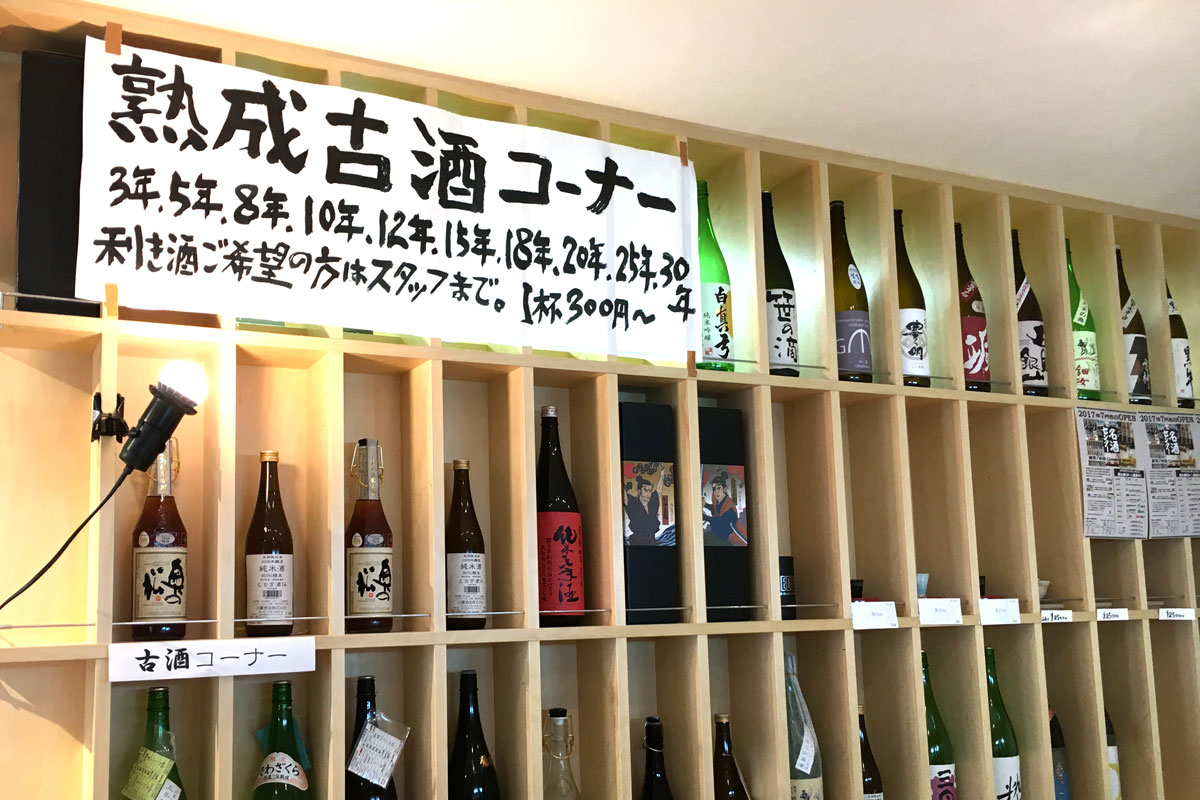
Something for the Road
After sampling all the delicious varieties of sake at Meishu Center, you may find yourself wishing you could enjoy such delicious sake at home. Good news! Almost all of the sake on display can also be bought by the bottle, in 720 mL (yongo-bin) or 1.8L (issho-bin) sizes. If you find a sake that particularly strikes your fancy, why not pick up a bottle to enjoy with dinner that night? The smaller size is compact and won’t take up too much space in your refrigerator, while the larger size will allow you to enjoy the gradual and delicate changes in flavor over a week or two after you open it. In addition to your own personal souvenir, a bottle of sake also makes for a great present for friends or family.
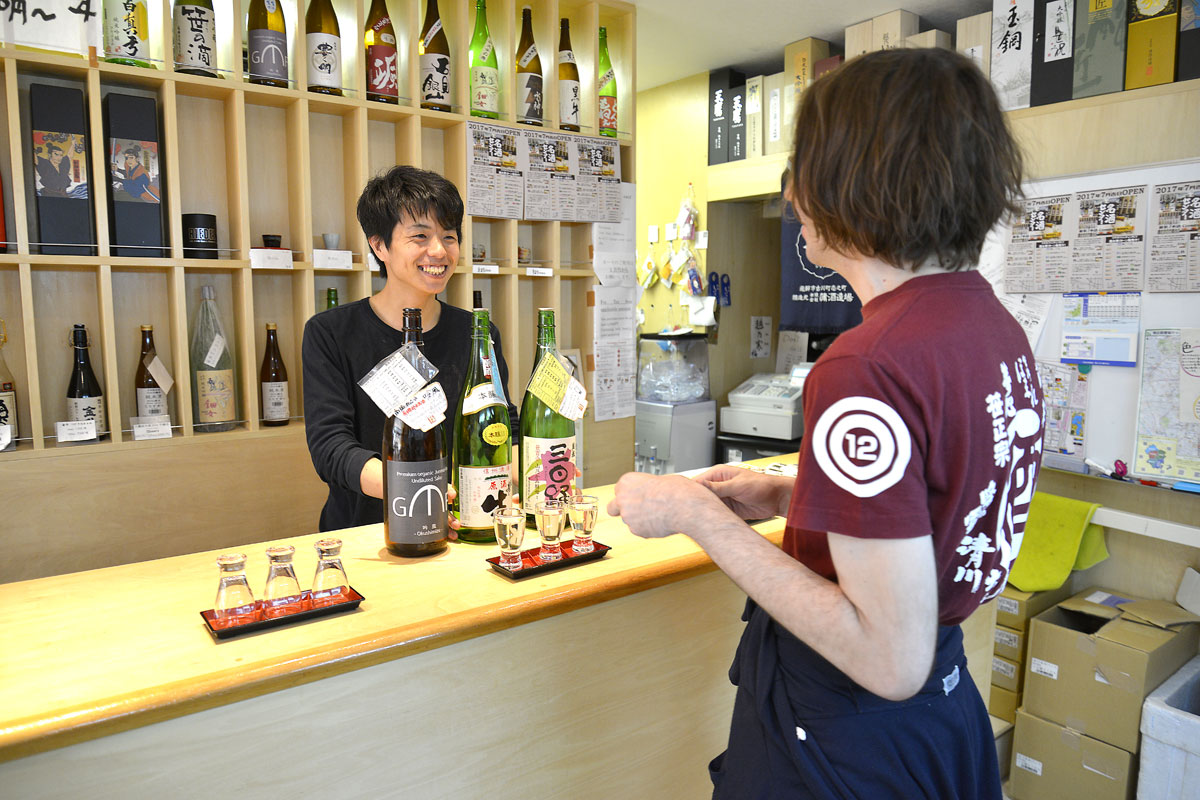
An almost limitless variety of delicious sake. Reasonable prices. Tasty sake snacks. Friendly, knowledgeable staff with a true passion for sake. Any way you measure it, Meishu Center is a sake lover’s paradise. But why take our word for it? If you’re interested in trying out sake, check it out for yourself. You just might find the sake of your dreams!
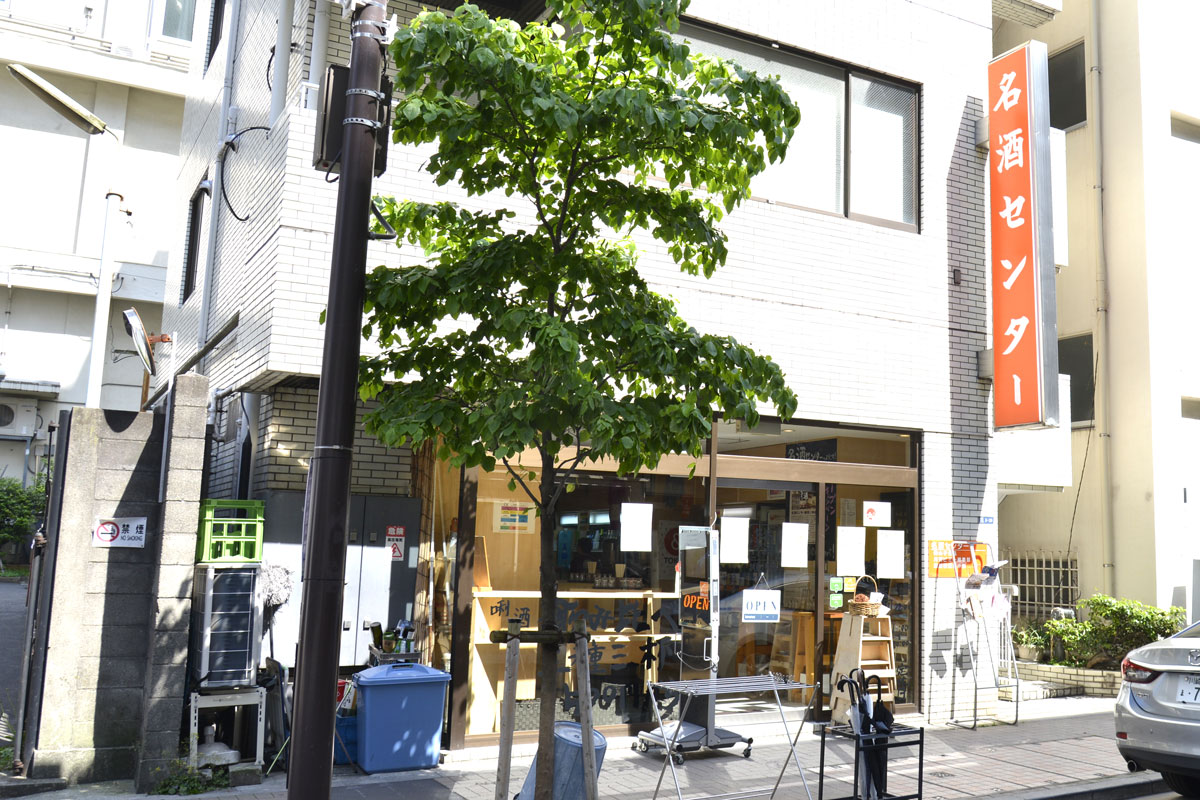
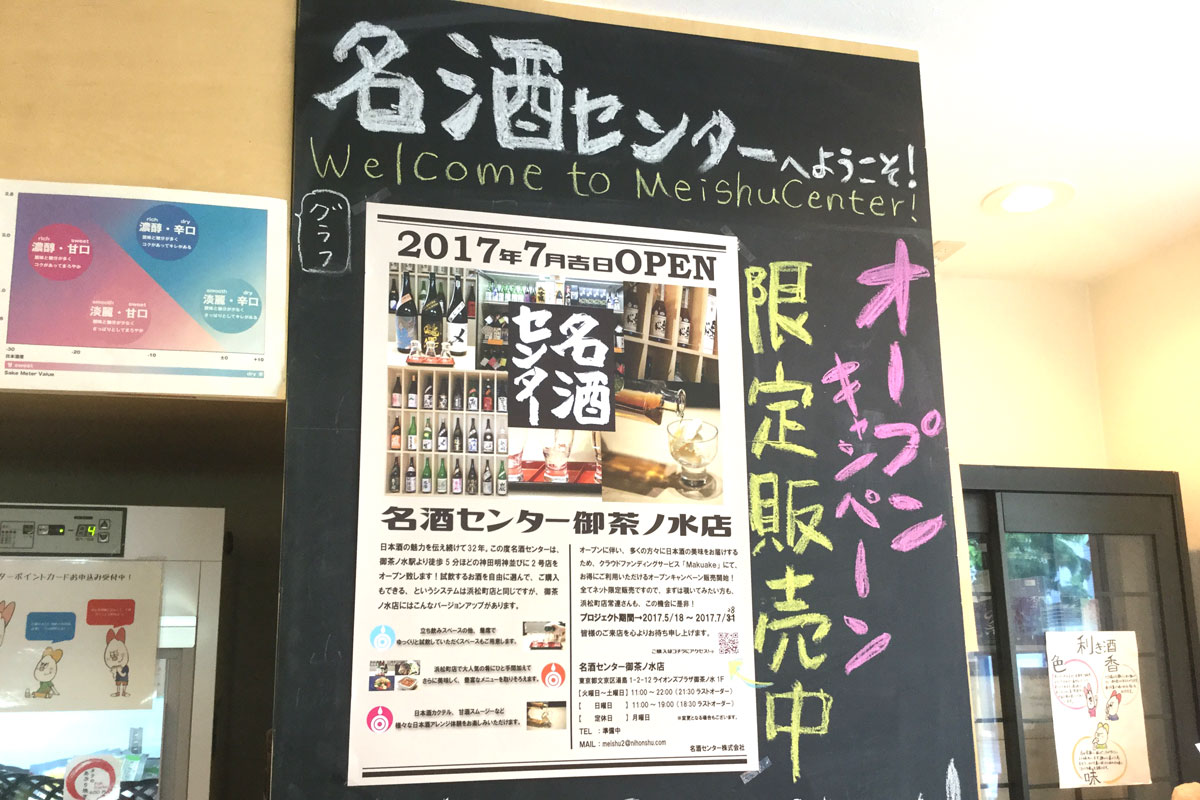
★Meishu Center Ochanomizu★
Hours:
(Tue-Fri) 2 p.m. to 10 p.m. (Last order 9:45 p.m.)
(Sat) 12 p.m. to 10 p.m. (Last order 9:45 p.m.)
(Sun) 12 p.m. to 7 p.m. (Last order 6:45 p.m.)
Closed Mondays
Phone: 03-5207-2420
Homepage: http://nihonshu.com/
Address: 1-2-12 Yushima, Bunkyo-ku, Tokyo (first floor of Lions Plaza Ochanomizu)
住所:東京都文京区湯島1-2-12ライオンズプラザ御茶ノ水1F
Getting there: 5 minutes on foot from JR Ochanomizu station, 7 minutes from Tokyo Metro Shin-Ochanomizu station, or 10 minutes from JR Akihabara station

▲Satoshi Honda, one of the young sake experts behind the counter at Meishu Center
Text: Jon Machida
Planning and Production: Ark Communications
